
Deutsch-Chinesische Enzyklopädie, 德汉百科

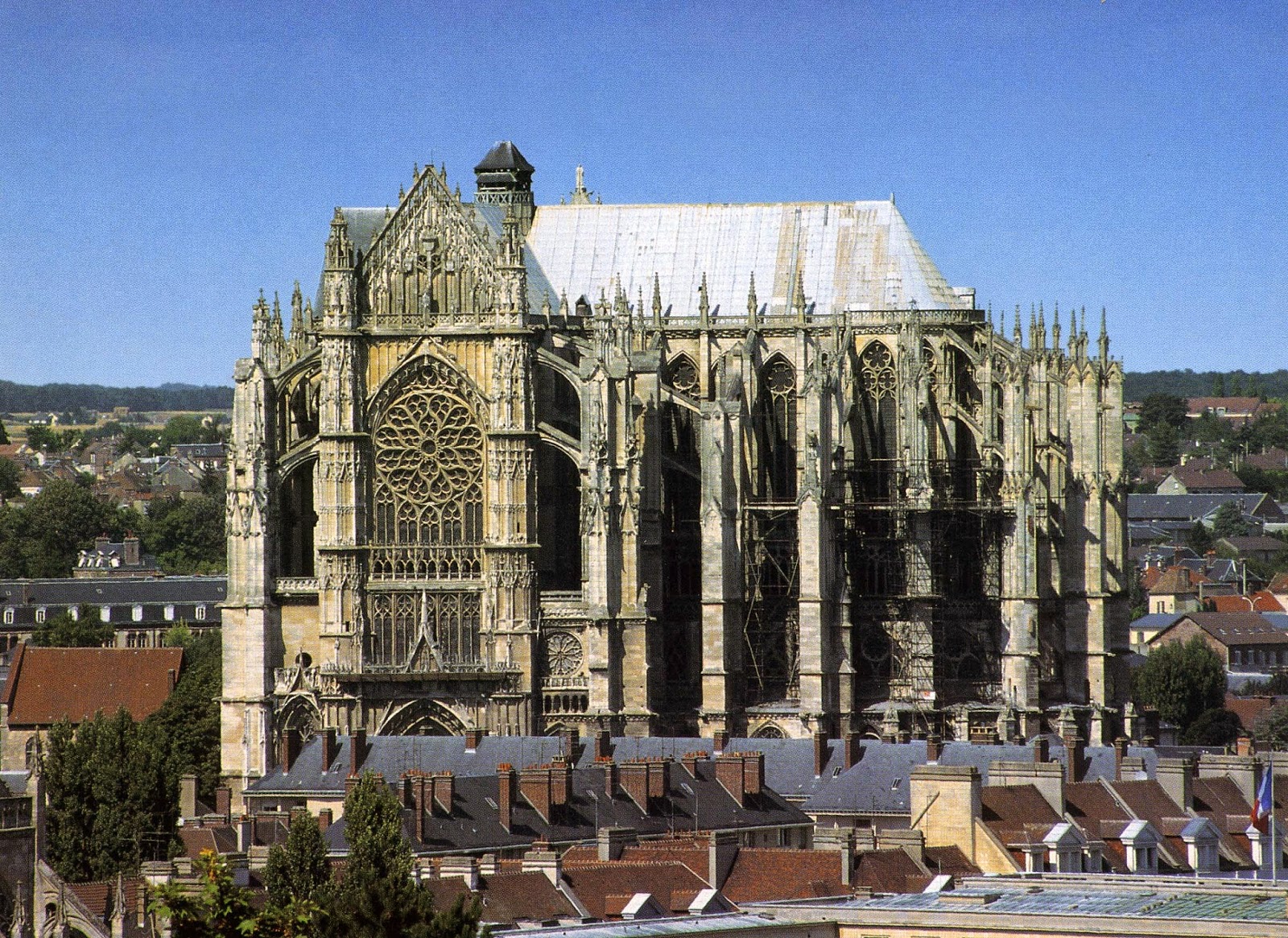
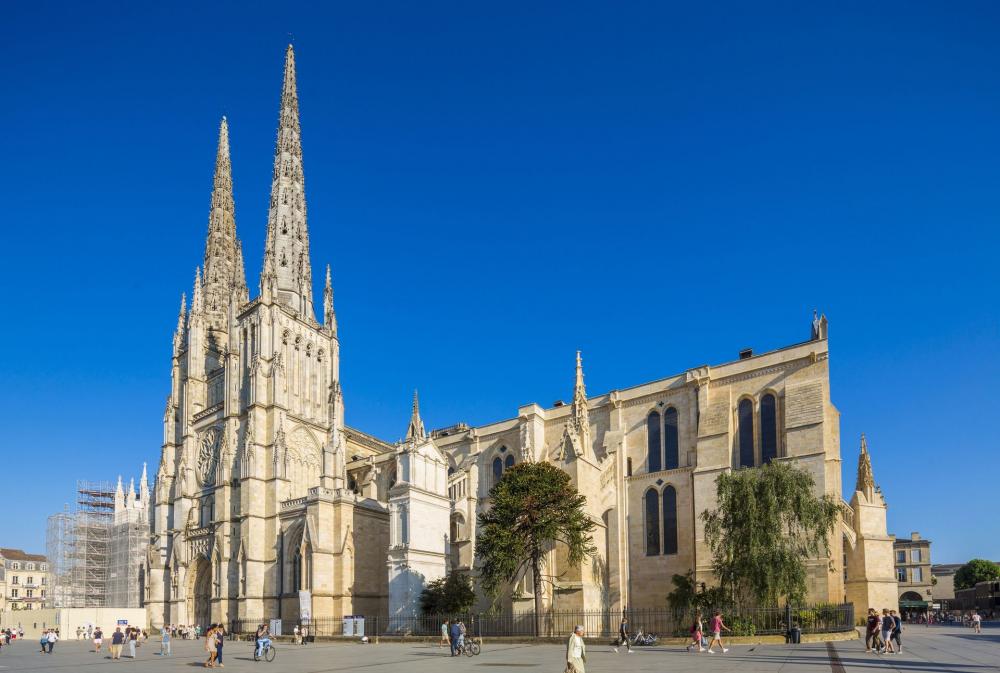
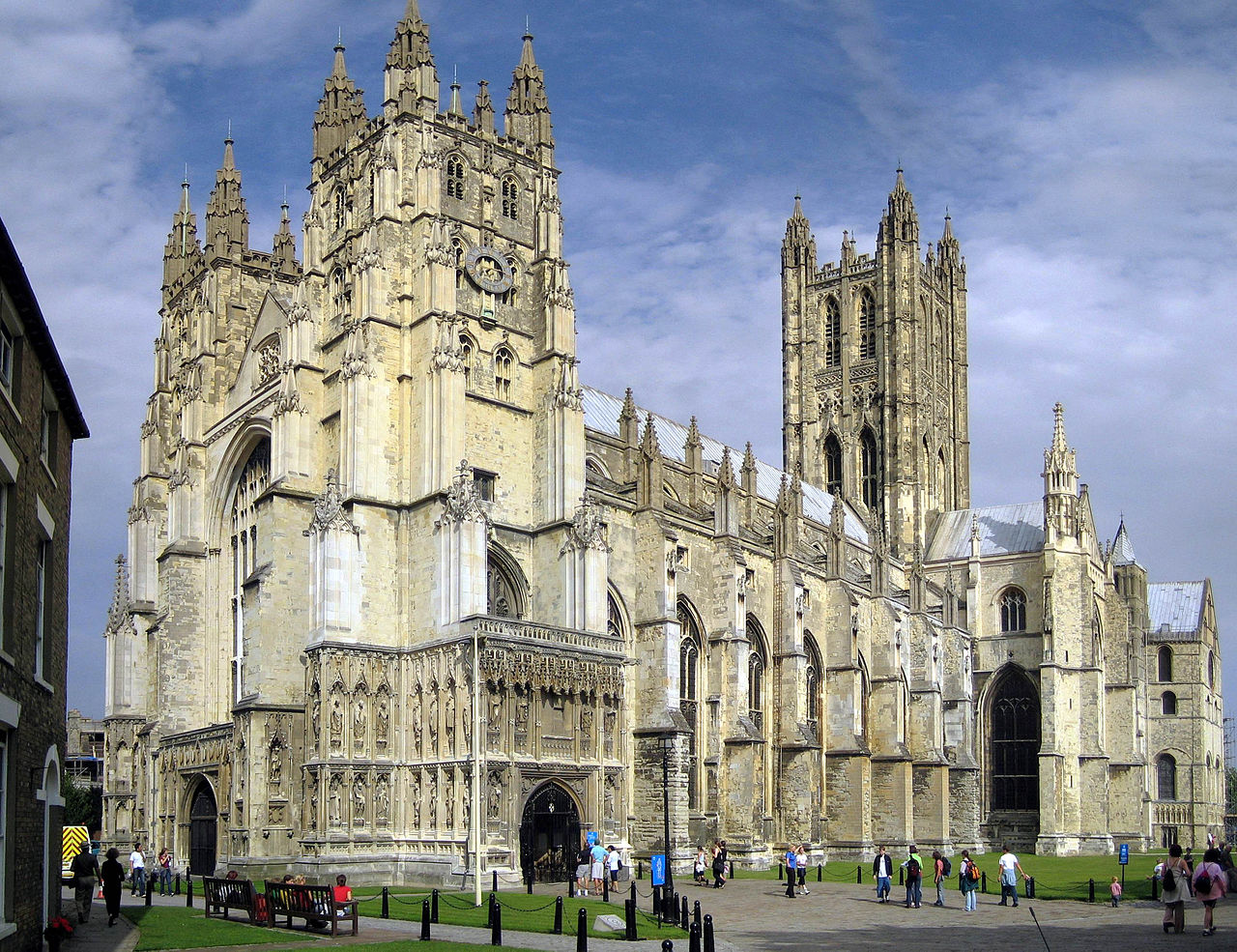
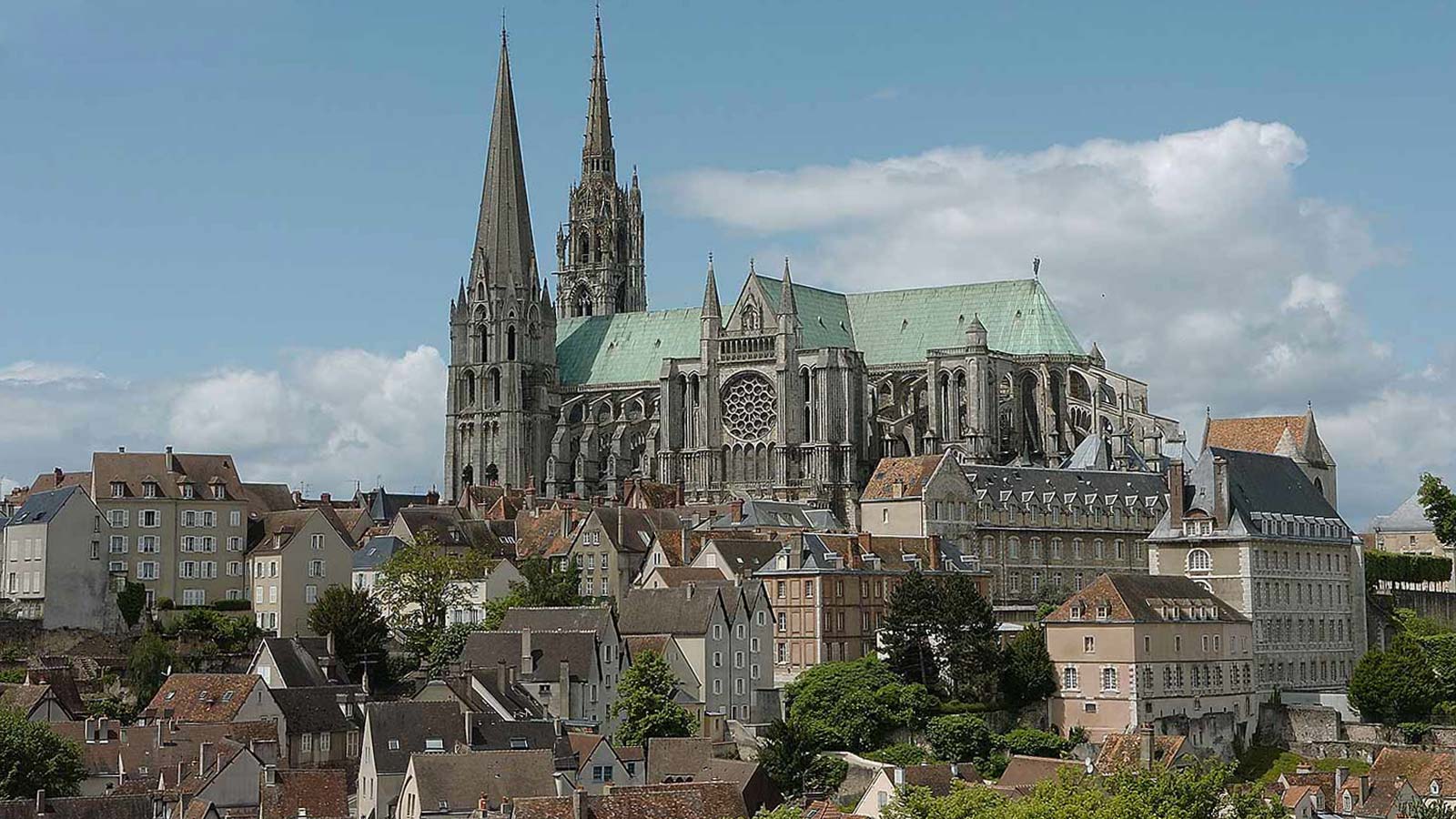

 Architecture
Architecture
 Gothic architecture
Gothic architecture

 Architecture
Architecture
 Romanesque architecture
Romanesque architecture

 Architecture
Architecture
 Renaissance architecture
Renaissance architecture

 Architecture
Architecture
 Baroque / Rococo architecture
Baroque / Rococo architecture

 Emilia-Romagna
Emilia-Romagna

 Religion
Religion
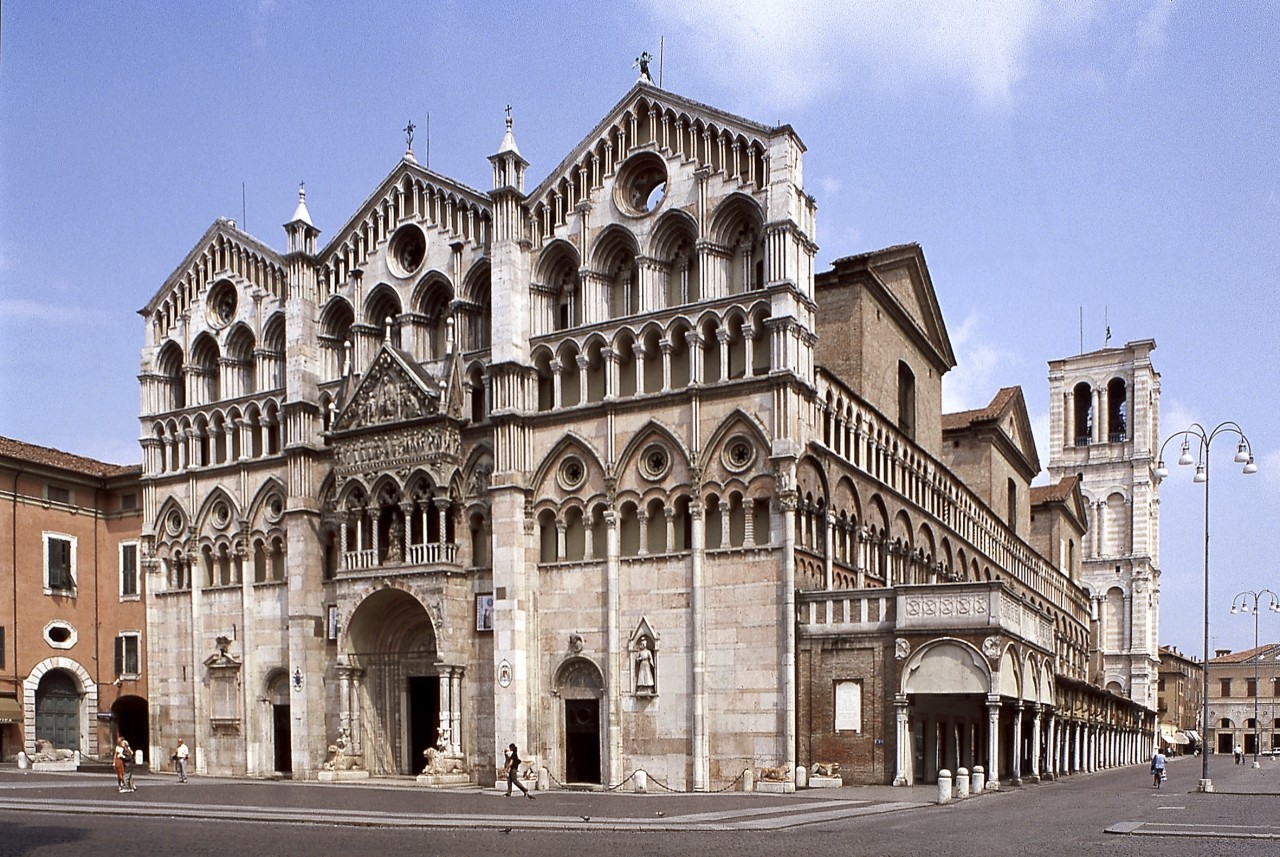
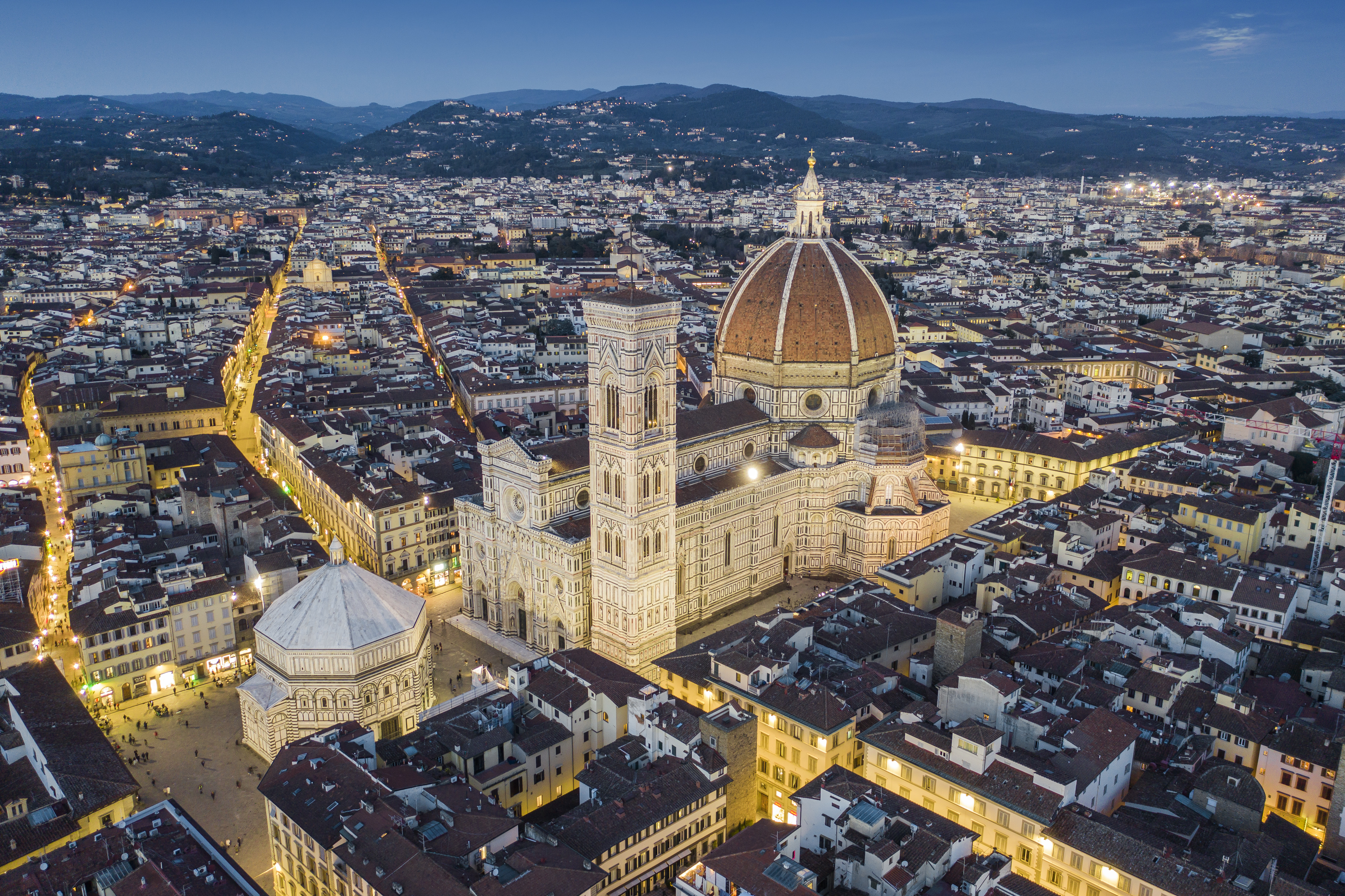

圣母百花圣殿,又称花之圣母大教堂(意大利语:Cattedrale di Santa Maria del Fiore)或佛罗伦斯主教座堂。是位于意大利佛罗伦斯的一座教堂,属哥特式风格的主教座堂。始建于1296年,由建筑师阿尔诺夫·迪·卡姆比奥设计,并采用了精通罗马古建筑的工匠菲利波·布鲁内莱斯基著名的圆顶(穹顶)建造,1436年最终完工。
大教堂有着十九世纪哥德复兴风格的立面,出自建筑师埃米利奥.德法布里斯之手。其外部使用色调深浅不同的白、绿和粉红多色的大理石块所铺砌而成,色彩斑斓而和谐。整个教堂建筑群位于主座教堂广场,由主教座堂、圣若望洗礼堂和乔托钟楼构成,并被列入联合国教科文组织的世界遗产佛罗伦斯历史中心(1982年)的一部分,因此吸引了世界各地游客纷至沓来,是托斯卡尼地区的旅游胜地。
圣母百花圣殿是意大利最大的教堂之一,而其圆顶是有史以来最大的砖造穹顶。大教堂是天主教佛罗伦斯总教区的主教堂,目前的总主教是朱塞佩·贝托里。
1982年,圣母百花大教堂作为佛罗伦斯历史中心一部分被列入世界遗产。
圣约翰洗礼堂位于主教座堂西边数米,7世纪即已建成,11世纪改建成现在的模样。为白色八角形罗曼式建筑。佛罗伦萨的孩童均在此受洗,包括但丁、马基雅弗利等名人。洗礼堂三扇铜门上刻有《旧约》故事的青铜浮雕,其中二扇为吉贝尔蒂所作,被米开朗基罗赞为“天国之门”。
钟塔高85米,最初于1334年由大画家乔托设计并监工,因此俗称“乔托钟塔”。属哥特式建筑,由六层方型结构向上堆叠成柱形,外墙铺白色大理石,纯净优雅。
主教座堂于1296年奠基,1347年秋天爆发黑死病迫使工程中断。1367年由全民投票决定在教堂中殿十字交叉点上建造直径43.7米,高52米的八角形圆顶。1418年佛罗伦萨市政府公开征集能够设计并建造大圆顶的方案。精通罗马古建筑的工匠菲利波·布鲁内列斯基胜出,为总建筑师。在建造拱顶时,没有采用当时流行的“拱鹰架”圆拱木架,而是采用了新颖的“鱼刺式”的建造方式,从下往上逐次砌成。主教座堂于1436年3月25日,举行献堂典礼。百年之后,米开朗基罗在罗马圣彼得大教堂也建了一座类似的大圆顶,却自叹不如:“我可以建一个比它大的圆顶,却不可能比它的美。”
大穹顶内部为16世纪佛罗伦萨画家乔尔乔·瓦萨里所绘巨幅天顶画《末日审判》。中殿北墙上有乌切洛所绘《乔凡尼·阿古托纪念碑》和为纪念但丁诞辰200年所绘的《但丁与神曲》(1465年)。
サンタ・マリア・デル・フィオーレ大聖堂(サンタ・マリア・デル・フィオーレだいせいどう、イタリア語: Cattedrale di Santa Maria del Fiore)は、イタリアのフィレンツェにあるキリスト教・カトリックの教会である。フィレンツェの大司教座聖堂であり、ドゥオーモ(大聖堂)、サン・ジョヴァンニ洗礼堂、ジョットの鐘楼の三つの建築物で構成される。教会の名は「花の(聖母)マリア」の意である。
巨大なドームが特徴の大聖堂は、イタリアにおける晩期ゴシック建築および初期ルネサンス建築を代表するもので、フィレンツェのシンボルとなっている。石積み建築のドームとしては現在でも世界最大[要出典]である。このドームは予算削減と耐久性を考慮し、二重構造のドームで互いを押し合う設計になっており、木枠を使わずに煉瓦を積み上げて製作している(en:Opus spicatumを参照)。
建物の主軸はほぼ東西に通り、西に八角形の洗礼堂、東にラテン十字の平面をもつ大聖堂がならび、両者の正面玄関が正対する。大聖堂は東に至聖所、西に正面玄関をもつ。キリスト教において東はイエス・キリストを象徴する方角であり、教会の祭壇は東に正対しておかれるのが基本形であった(西ヨーロッパの大聖堂建築を参照)。
鐘楼は大聖堂の南西隅に配置されている。大聖堂の広場をへだてた東側には付属の美術館があり、教会の宝物や、かつて外部をかざっていた美術品がおさめられている。
三つの建築物とも世界遺産フィレンツェ歴史地区の一部として指定されている。
Florence Cathedral, formally the Cattedrale di Santa Maria del Fiore (Italian pronunciation: [katteˈdraːle di ˈsanta maˈriːa del ˈfjoːre]; in English "Cathedral of Saint Mary of the Flower"), is the cathedral of Florence, Italy (Italian: Duomo di Firenze). It was begun in 1296 in the Gothic style to a design of Arnolfo di Cambio and was structurally completed by 1436, with the dome designed by Filippo Brunelleschi.[1] The exterior of the basilica is faced with polychrome marble panels in various shades of green and pink, bordered by white, and has an elaborate 19th-century Gothic Revival façade by Emilio De Fabris.
The cathedral complex, in Piazza del Duomo, includes the Baptistery and Giotto's Campanile. These three buildings are part of the UNESCO World Heritage Site covering the historic centre of Florence and are a major tourist attraction of Tuscany. The basilica is one of Italy's largest churches, and until the development of new structural materials in the modern era, the dome was the largest in the world. It remains the largest brick dome ever constructed.
The cathedral is the mother church of the Roman Catholic Archdiocese of Florence, whose archbishop is Giuseppe Betori.
La cathédrale Santa Maria del Fiore (« Sainte Marie de la Fleur », baptisée ainsi en rapport au Lys de Florence ou le Duomo) est la cathédrale/dôme du XIIIe siècle de l'archidiocèse de Florence à Florence en Toscane (Italie). Située piazza del Duomo dans le centre historique de Florence, elle est accolée au campanile de Giotto et face à la porte du Paradis du baptistère Saint-Jean et à la Loggia del Bigallo. Avec son dôme de l'architecte Filippo Brunelleschi de 1436 (le plus grand du monde en maçonnerie avec 45,5 mètres de diamètre maximum de la coupole intérieure) qui marque le début de l'architecture de la Renaissance, elle est classée au patrimoine mondial de UNESCO depuis 1982.
Santa Maria del Fiore (Sainte Marie de la Fleur) est la cinquième église d'Europe par sa taille, après la basilique Saint-Pierre de Rome, la cathédrale Saint-Paul de Londres, la cathédrale de Séville et le dôme de Milan1. Elle mesure 153 mètres de long et la base de la coupole mesure 41,98 mètres de large, avec un plan basilical :
- comportant une nef à trois vaisseaux, les collatéraux étant moins hauts que le vaisseau central ;
- avec un chevet comportant trois chapelles rayonnantes ;
- soutenant l'immense dôme/coupole de Filippo Brunelleschi.
La coupole de la cathédrale est la plus grande coupole en appareil maçonné jamais construite. On peut voir, à l'intérieur, une des plus grandes fresques narratives : 3 600 m2 de fresques, exécutées par Giorgio Vasari et Federigo Zuccaro.
La construction, commencée sur les anciennes fondations de l'église Santa Reparata, en 1296 par Arnolfo di Cambio, a été continuée par Giotto di Bondone de 1334 jusqu'à sa mort en 1337. Giotto n'entamera que la construction du campanile de Giotto et ce sont Francesco Talenti et Giovanni di Lapo Ghini qui continueront la construction en 1357.
En 1412, elle est rebaptisée Santa Maria del Fiore. L'église est consacrée le 25 mars 1436, à la fin des travaux de la coupole de Brunelleschi, par le Pape Eugène IV.
À ce jour, elle est la cathédrale/dôme de l'archidiocèse de Florence.
La cattedrale metropolitana di Santa Maria del Fiore, conosciuta comunemente come duomo di Firenze, è la principale chiesa fiorentina, simbolo della città ed uno dei più famosi d'Italia; quando fu completata, nel Quattrocento, era la più grande chiesa al mondo, mentre oggi è la terza in Europa dopo San Pietro a Roma e San Paolo a Londra[1]. Essa sorge sulle fondamenta dell'antica cattedrale di Firenze, la chiesa di Santa Reparata, in un punto della città che ha ospitato edifici di culto sin dall'epoca romana.
La costruzione del Duomo, ordinata dalla Signoria fiorentina, inizia nel 1296 e termina dal punto di vista strutturale soltanto nel 1436. I lavori iniziali furono affidati all'architetto Arnolfo di Cambio per poi essere interrotti e ripresi numerose volte nel corso dei decenni (da Giotto, Francesco Talenti e Giovanni di Lapo Ghini). Al completamento della cupola del Brunelleschi seguì la consacrazione da parte di papa Eugenio IV il 24 marzo del 1436. La dedica a Santa Maria del Fiore avvenne in corso d'opera, nel 1412.
La pianta del Duomo è composta da un corpo di basilica a tre navate saldato ad un'enorme rotonda triconica che sorregge l'immensa cupola del Brunelleschi, la più grande cupola in muratura mai costruita. Al suo interno è visibile la più grande superficie mai decorata ad affresco: 3600 m², eseguiti tra il 1572-1579 da Giorgio Vasari e Federico Zuccari. Alla base della lanterna in marmo, è presente una terrazza panoramica sulla città posta a 91 metri da terra. La facciata del Duomo in marmi policromi è di epoca moderna, risale infatti al 1887 ad opera di Emilio de Fabris ed è un importante esempio di stile neogotico in Italia.
È la cattedrale dell'Arcidiocesi di Firenze e può contenere fino a trentamila persone[2]. Ha la dignità di basilica minore[3].
La basílica catedral metropolitana de Santa Maria del Fiore, o catedral de Santa María de la Flor (en italiano, Cattedrale di Santa Maria del Fiore), es la sede episcopal (en italiano duomo) de la archidiócesis de Florencia, Italia. Es una de las obras maestras del arte gótico y del primer Renacimiento italiano.
Símbolo de la riqueza y del poder de la capital toscana durante los siglos XIII y siglo XIV, la catedral florentina es uno de los edificios más grandes de la cristiandad. Su nombre se refiere al lirio, símbolo de Florencia, o al antiguo nombre del pueblo llamado Fiorenza. Pero, por otra parte, un documento del siglo XV afirma que la «flor» se refiere a Cristo.
Destaca, de forma singular, la grandiosa cúpula, obra de Filippo Brunelleschi,1 una estructura isostática de 100 m de altura interior; 114,5 m de altura exterior; 45,5 m de diámetro exterior y 41 m de luz (diámetro interior) con la particularidad de que esta cúpula, en sí misma, anula los empujes horizontales para no transmitir al tambor que la sustenta prácticamente más cargas que las verticales correspondientes a su propio peso.2 A la cúpula hay que añadir el campanile de Giotto, un campanario independiente trazado por Giotto, de 84,70 m de altura, y el baptisterio de San Juan, con las famosas puertas de bronce de Ghiberti. El conjunto, formado por la iglesia, el campanario y el baptisterio, constituye una de las joyas artísticas y arquitectónicas de Florencia.
La basílica se encuentra dentro de la declaración del Centro histórico de Florencia como Patrimonio de la Humanidad por la UNESCO desde 1982.3
Собор Санта-Мария-дель-Фьоре (итал. La Cattedrale di Santa Maria del Fiore — собор Святой Марии в цветах) — кафедральный собор во Флоренции, самое знаменитое из архитектурных сооружений флорентийского кватроченто. Находится в самом центре города, на Соборной площади.
Дуомо воздвигли на месте старого кафедрального собора Санта-Репарата, который к концу XIII столетия, согласно документам того времени, начал обрушаться, насчитывая девять веков своего существования. Тем более храм стал мал для города в период быстрого роста населения. Также процветающая Флоренция должна была превзойти в величии кафедральные соборы своих тосканских соперников — Сиену и Пизу, храмом бо́льшим в размере и богаче украшенным. В результате Санте Мария дель Фьоре стал на момент завершения постройки в 1434 году самым большим во всей Европе: в нём может разместиться 30 000 человек.
Решение о строительстве собора на месте древней церкви Санта-Репарата (IV—V века) было принято в 1289 году. Задание построить на месте Санта-Репараты более величественную церковь получил от гильдии искусств зодчий Арнольфо ди Камбио.
Собор являлся местом проповедей Савонаролы, а также в соборе во время заговора Пацци в 1478 году было совершено покушение на Лоренцо Медичи и его брата Джулиано. Организатором покушения был папа Сикст IV. В результате нападения Джулиано Медичи был убит, а Лоренцо спасся в одной из ризниц собора.


 Architecture
Architecture
 Romanesque architecture
Romanesque architecture

 Architecture
Architecture
 Gothic architecture
Gothic architecture
 England
England

 Religion
Religion
 United Kingdom
United Kingdom
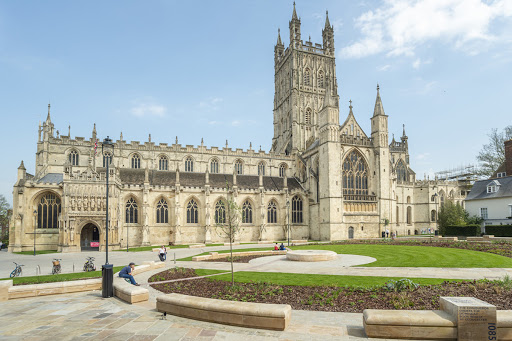



Die Kathedrale von Lincoln (Cathedral Church of the Blessed Virgin Mary of Lincoln, offiziell: The Cathedral Church of St. Mary[1]) ist eines der bedeutendsten Werke der englischen Gotik. Die ältesten Teile zeigen noch normannischen Baustil. Sie befindet sich im englischen Lincoln und ist die Kathedralkirche des anglikanischen Bischofs von Lincoln.
Auf dem heute flachen Abschluss des Vierungsturms befand sich ein hölzerner Turmhelm, welcher der Kathedrale nach einer ungesicherten Überlieferung eine Gesamthöhe von ca. 160 Metern (525 feet) verlieh. Somit war die Kathedrale von Lincoln mehr als 200 Jahre lang (ca. 1311–1549) das vermutlich höchste Gebäude der Welt[2] und das erste Bauwerk, welches diesen Titel nach der Cheops-Pyramide innehatte. Sie ist für ihren Engelschor und die sogenannten „verrückten Gewölbe“ bekannt und gilt als eine der Schulen der englischen Gotik.
林肯座堂(英语:Lincoln Cathedral,全名为The Cathedral Church of the Blessed Virgin Mary of Lincoln)座落于英国东部的林肯郡,属于英国国教会。林肯大教堂曾经保持世界最高建筑的头衔超过200年之久,不过16世纪时,座堂的中心尖端崩塌,后来并没有再度重建。
 History
History
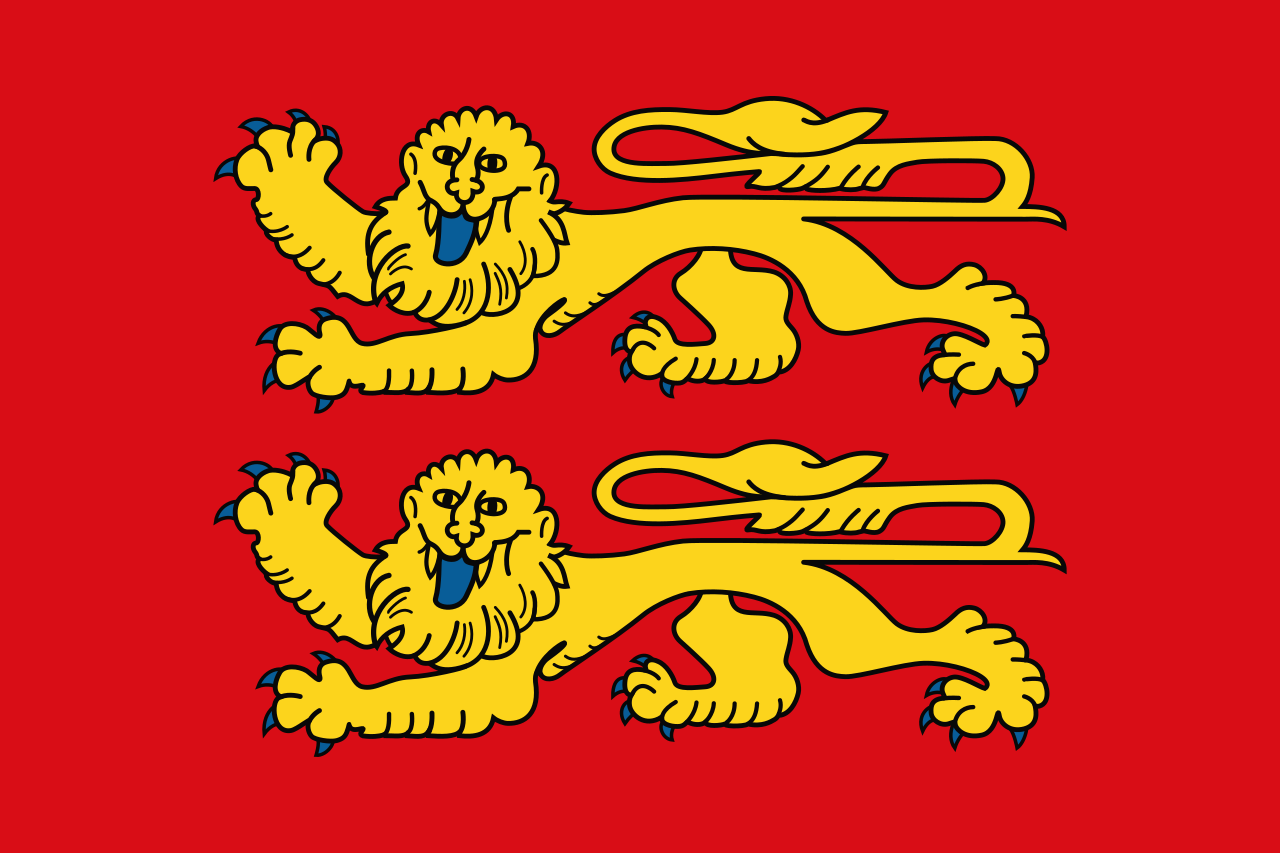 Normandie
Normandie
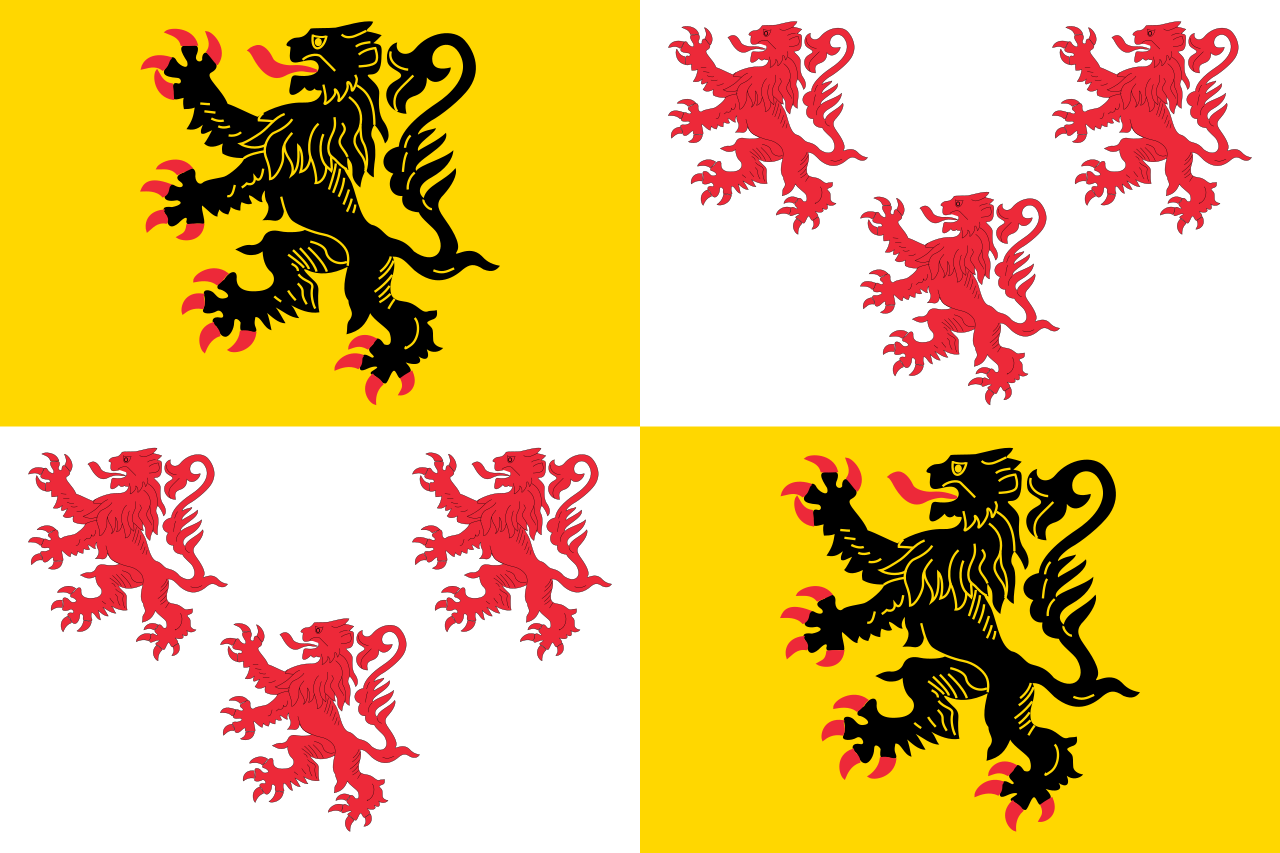 Hauts-de-France
Hauts-de-France
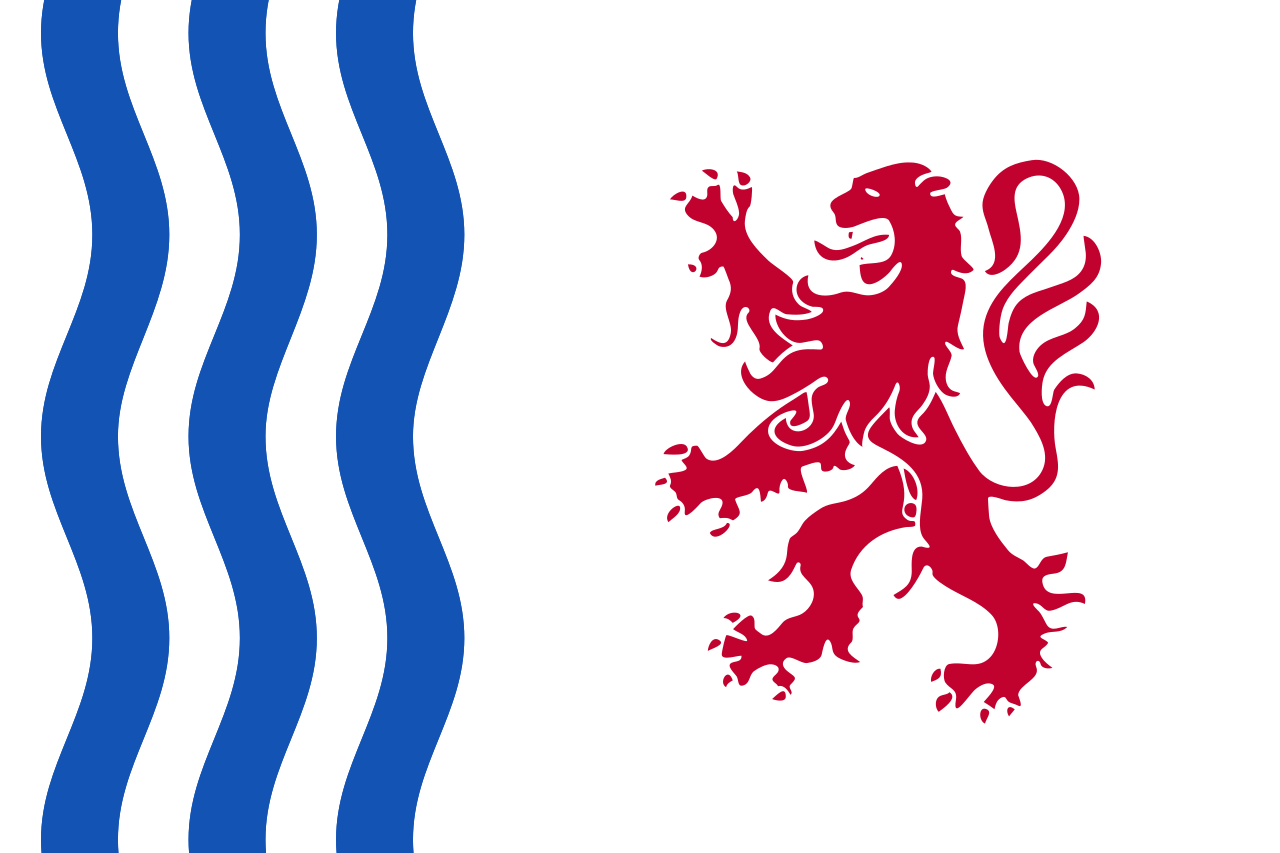 Nouvelle-Aquitaine
Nouvelle-Aquitaine
 World Heritage
World Heritage
 Centre-Val de Loire
Centre-Val de Loire
 Art
Art
 Toscana
Toscana
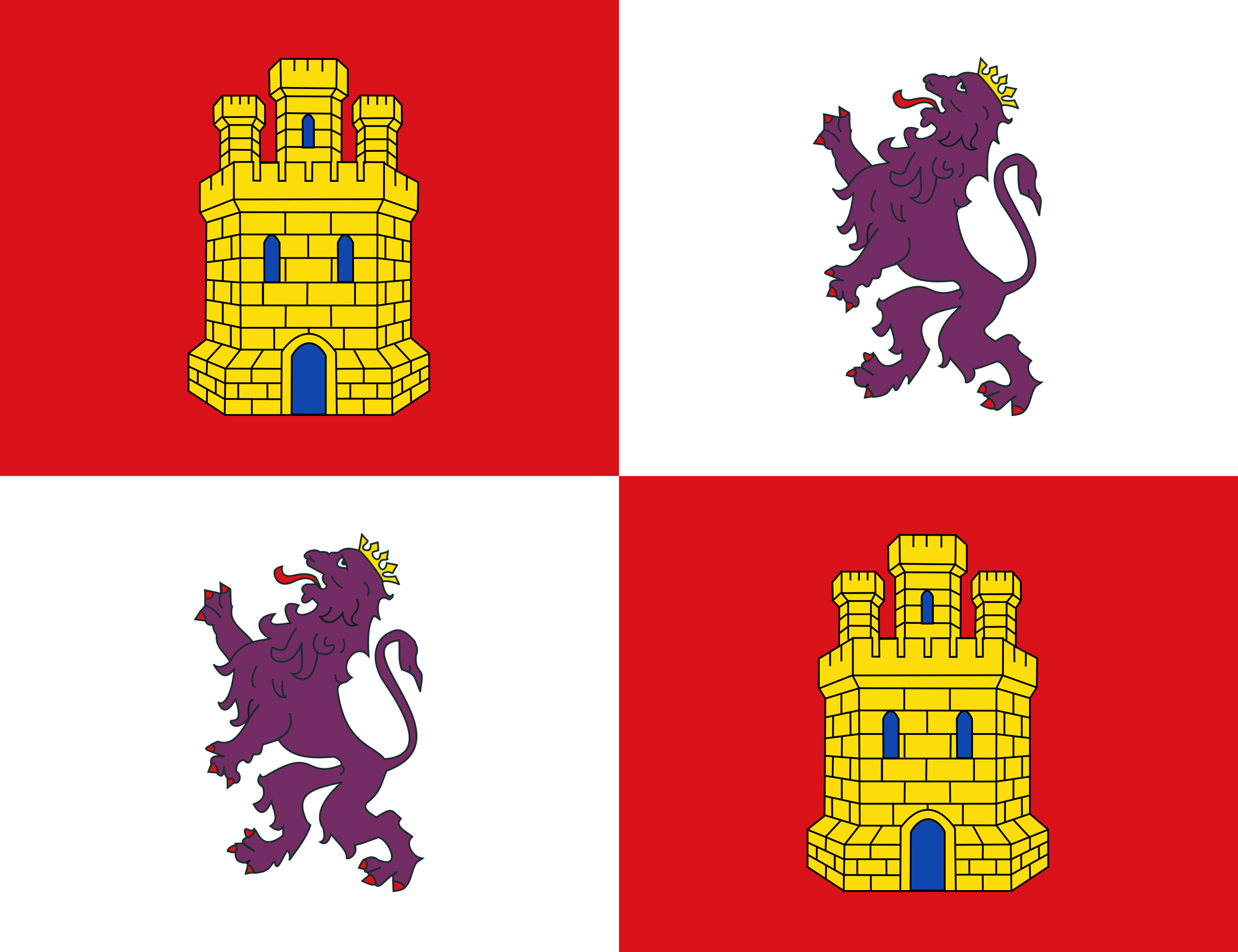 Castilla y León
Castilla y León